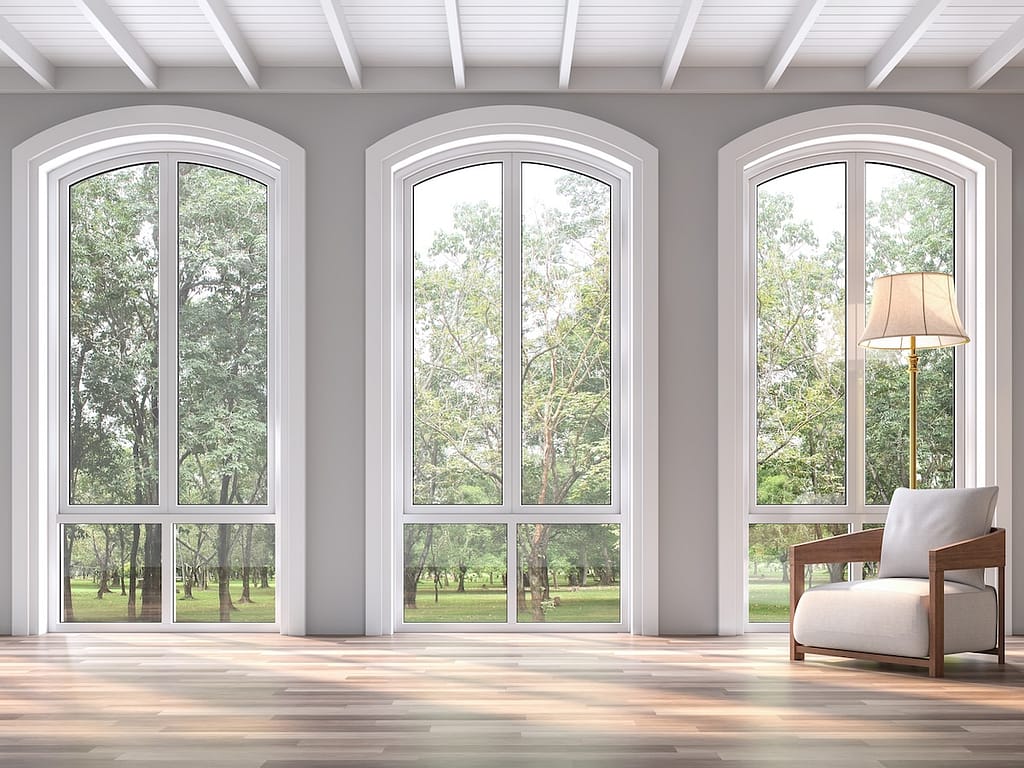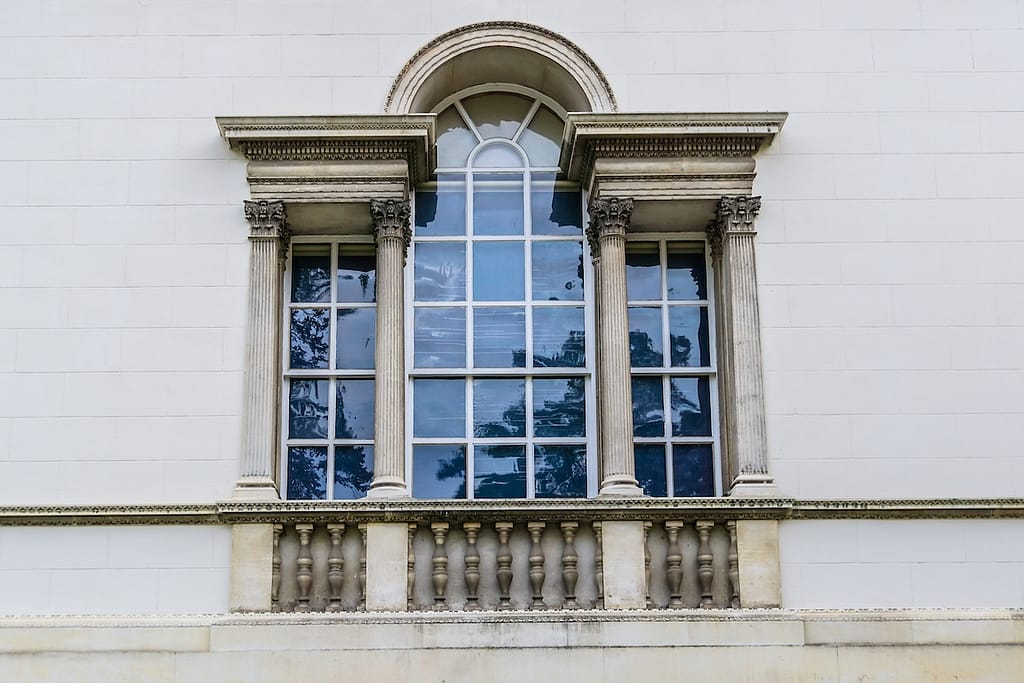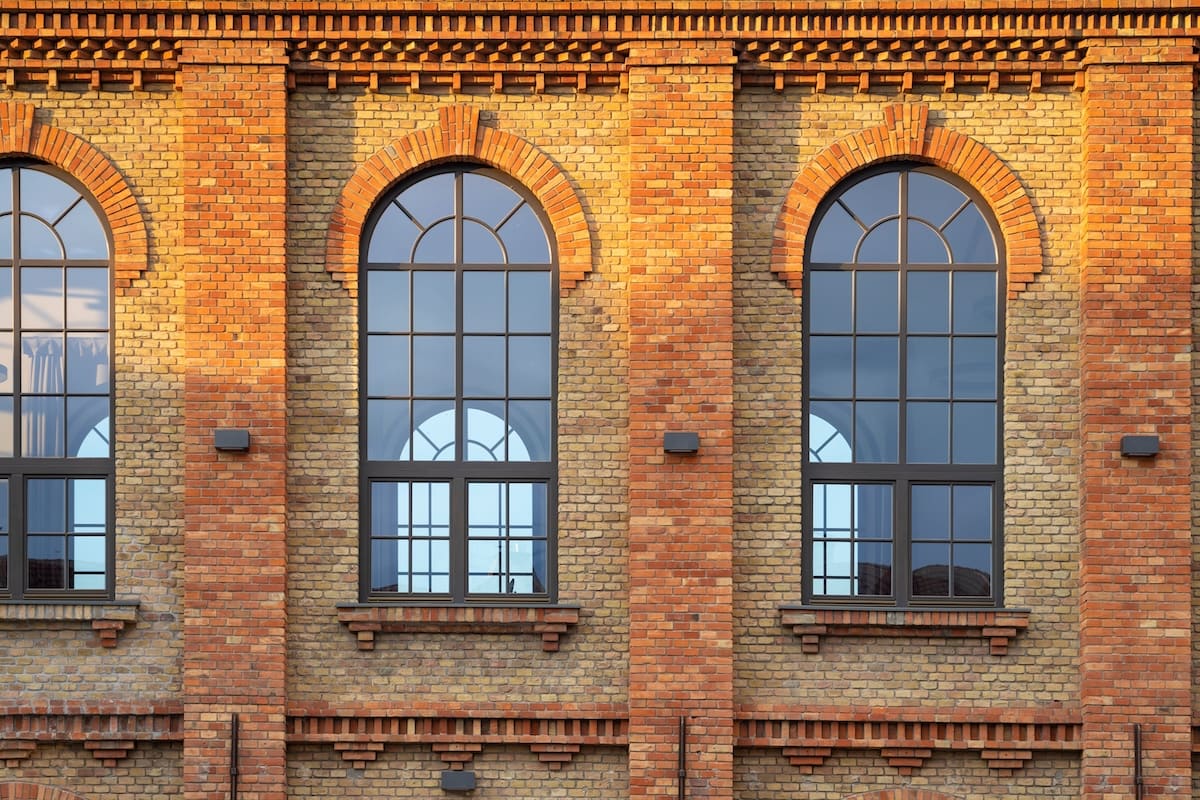When planning a home remodel or new build, one common question arises: what are architectural windows and how do they differ from standard designs? Architectural windows are custom-shaped or uniquely designed windows that go beyond functionality to make a visual statement. They’re often used as focal points, enhancing both the interior and exterior of a home with character and style. Whether you want a dramatic arched entryway or sleek geometric accents, architectural windows allow you to personalize your home in ways that ordinary windows cannot. Today’s custom replacement window options make it easier than ever to integrate these stylish designs into your project.
In this guide, you’ll learn:
- The defining features of architectural windows
- Why they matter for design and value
- Seven key types of architectural windows to consider
- Comparisons with standard window designs
- Practical care and replacement tips to protect your investment
🏛️ Why Architectural Windows Add Value

Architectural windows aren’t just decorative; they serve practical and aesthetic purposes that elevate the entire home. They create an impression of thoughtful design, blending form and function seamlessly.
- Curb Appeal: Architectural windows make exteriors stand out with unique shapes and dramatic visuals.
- Natural Light: Larger and custom-shaped windows maximize daylight, brightening interiors naturally.
- Personalized Design: Homeowners can choose shapes and placements that reflect individual taste.
- Increased Value: Unique windows are often seen as premium features, raising resale appeal.
- Enhanced Flow: When placed strategically, they create smooth visual transitions between spaces.
🪟 7 Common Types of Architectural Style Windows
Architectural windows come in many shapes and sizes. These seven categories cover the most popular styles homeowners choose when they want something special.
1. Arched Windows
Arched windows feature rounded tops that bring elegance and softness to a home’s design.
- Commonly used above entryways or in living rooms
- Can be combined with rectangular units for grand designs
- Complements both traditional and Mediterranean-style homes
2. Circular and Oval Windows
Round and oval windows add visual interest and break up standard rectangular lines.
- Often used in bathrooms, stairwells, or attics
- Provide natural light in compact or unconventional spaces
- Can be simple or detailed with decorative grilles
3. Triangular and Polygonal Windows
These windows are cut into angular shapes, perfect for modern and contemporary architecture.
- Works well in A-frame homes or dramatic rooflines
- Highlights geometric elements of design
- Often custom-made to fit unique wall spaces
4. Bay and Bow Windows
While technically functional windows, bay and bow designs are also architectural features due to their dramatic projection.
- Extend outward, creating cozy seating or display areas inside
- Add dimension and depth to exterior walls
- Increase both light and usable space indoors
5. Palladian Windows

Palladian windows consist of a large central arched window flanked by two smaller rectangular windows.
- Adds symmetry and grandeur to formal spaces
- Common in traditional or classical-style architecture
- Works beautifully in great rooms or entryways
6. Gothic and Specialty Shapes
From pointed arches to custom designs, gothic-inspired or specialty windows bring historic character or bold modern flair.
- Often used in churches or historic-style homes
- Can be designed with stained or decorative glass
- Requires custom manufacturing
7. Picture Windows with Architectural Grilles
Large fixed windows can become architectural elements when paired with decorative grilles or shapes.
- Perfect for scenic views
- Can mimic traditional patterns or modern grids
- Enhances interiors by framing outdoor landscapes
Bonus: Combining Shapes for Custom Designs
One of the greatest advantages of architectural windows is their ability to be combined into unique groupings. For example, homeowners might pair a large picture window with arched toppers or flank a triangular window with smaller rectangles. These combinations let you highlight the character of your home’s layout and create dramatic focal points that can’t be achieved with standard sizing alone.
🔍 How Architectural Windows Compare to Standard Options
Understanding the difference between architectural and standard windows helps homeowners decide when customization is worth the investment.
- Standard Windows: Functional, cost-effective, and widely available. Designed to fit common openings and maximize practicality.
- Architectural Windows: Customized for shape, size, and style. Adds a design element that reflects personality and elevates the look of the home.
While standard windows cover everyday needs, architectural windows are ideal for creating focal points or enhancing distinctive features. Many homeowners use a combination of both for a balanced design.
🧰 Care and Maintenance Tips for Architectural Windows
Because many architectural windows are custom or larger in size, maintenance is important for keeping them functional and beautiful.
Cleaning Tips
- Use mild soap and water for frames; avoid harsh chemicals
- For tall or uniquely shaped windows, consider professional cleaning for safety
- Regularly clean grilles or decorative glass to prevent buildup
Inspection Routine
- Check for cracks in seals around curved or custom shapes
- Inspect for warping or shifting, especially in larger designs
- Confirm that caulking and flashing are intact to prevent water intrusion
Seasonal Considerations
- Spring: Clean and inspect after winter storms
- Summer: Watch for UV damage on painted or wood frames
- Fall: Clear debris around exterior ledges
- Winter: Monitor for condensation or drafts
Professional Maintenance Advantage
Because architectural windows are often custom, professional maintenance or repair is recommended for any serious issues. Expert technicians understand how to handle unique frames and specialty glass without damaging them. Scheduling a professional inspection every few years helps catch problems early and ensures your windows remain a strong design feature for decades.
💡 Signs It’s Time to Replace Architectural Windows

Even premium architectural windows eventually wear down. Knowing when replacement is needed ensures your home stays efficient and secure.
- Persistent Drafts: Indicate broken seals or warped frames
- Condensation Between Panes: A sign of failed insulated glass units
- Difficulty Cleaning: May point to deterioration or poor access
- Fading Frames: UV damage can weaken structure and appearance
- Visible Cracks: Both in glass or frame, reducing efficiency and safety
Replacement Benefits
- Improved energy performance with modern insulated glass
- Enhanced curb appeal with updated shapes or finishes
- Better safety with stronger locking mechanisms and materials
Repair vs. Replacement
| Option | Best For | Pros | Cons |
| Repair | Minor seal issues, small cracks | Cost-effective, quick | Limited lifespan extension |
| Replacement | Aging, inefficient, or severely damaged windows | Long-term value, efficiency, curb appeal | Higher upfront investment |
🌟 Elevate Your Home with Architectural Windows
Architectural windows transform homes by blending artistry with performance. They provide natural light, highlight unique designs, and add character in ways that standard windows can’t match. Whether you’re renovating, designing a new build, or replacing old units, architectural styles allow you to express your vision while improving comfort and efficiency. If you’re ready to explore these options, contact us today to discuss how custom architectural windows can bring new life to your home.







